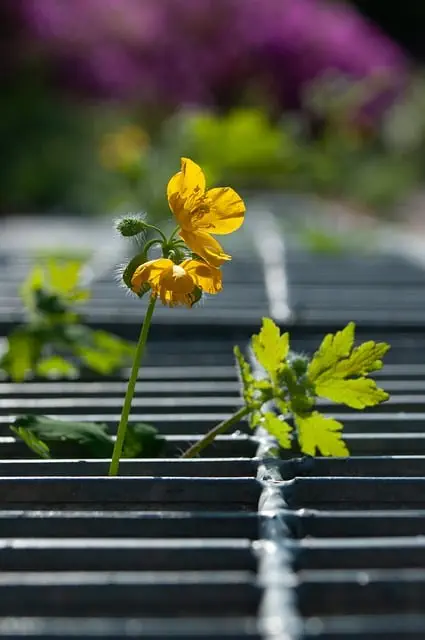Green Vein Kratom Extract, derived from the Mitragyna speciosa tree, is a unique botanical with a balanced alkaloid profile that provides both stimulant and sedative effects. This strain, celebrated for its lush appearance in kratom tree pictures and its aesthetic value in natural environments, contains a distinctive blend of mitraphylline and 7-hydroxymitragynine, which influences its effects based on dosage. The versatile nature of Green Vein Kratom has piqued the interest of researchers for its potential in wellness practices, supported by both anecdotal and some scientific evidence of its efficacy in promoting overall well-being. The kratom tree, indigenous to Southeast Asia, is known for its alkaloids mitragynine and 7-hydroxymitragynine, which have pharmacological effects and contribute to the plant's complex interactions with the body. Cultivation of the kratom tree requires specific conditions akin to its natural habitat to thrive, and kratom tree pictures illustrate its vibrant foliage and the environmental factors that influence its growth. Ongoing research into the plant's effects is expanding our understanding of its potential therapeutic uses, while also highlighting the importance of preserving the ecological context in which it grows. The visual documentation through kratom tree pictures not only captures the beauty of the plant but also underscores its cultural and ecological significance.
Green Vein Kratom Extract emerges as a topic of growing interest within herbal and natural medicine circles. This article delves into the potent properties of this botanical substance, offering readers an in-depth understanding of its effects and uses through “Unveiling the Potent Properties of Green Vein Kratom Extract: A Closer Look.” It also explores the scientific underpinnings behind its effects in “The Science Behind Green Vein Kratom’s Effects and Uses,” providing a solid foundation for informed discussion. For those captivated by the intricacies of nature, “Cultivation Chronicles: Growing the Kratom Tree and Capturing Its Essence in Pictures” offers a visual journey into the cultivation process that yields this unique extract, complete with stunning kratom tree pictures that bring the narrative to life. Join us as we traverse the complexities of Green Vein Kratom Extract, a natural wonder that has piqued the curiosity of many.
- Unveiling the Potent Properties of Green Vein Kratom Extract: A Closer Look
- The Science Behind Green Vein Kratom's Effects and Uses
- Cultivation Chronicles: Growing the Kratom Tree and Capturing Its Essence in Pictures
Unveiling the Potent Properties of Green Vein Kratom Extract: A Closer Look

Green Vein Kratom Extract, derived from the leaves of the Mitragyna speciosa tree, has garnered attention for its unique alkaloid profile that sets it apart from its red and white vein counterparts. The kratom tree, native to Southeast Asia, is revered not only for its medicinal properties but also for its aesthetic value, as evidenced by the plethora of kratom tree pictures available online. These images capture the intricate details of its broad leaves and the robust structure that thrives in its natural habitat. The green vein variant is particularly noted for its balanced alkaloid content, which includes mitraphylline and 7-hydroxymitragynine, among others, offering a blend of stimulant and sedative effects depending on the dosage consumed. This delicate balance is what makes Green Vein Kratom Extract a subject of interest for researchers and enthusiasts alike, as it exemplifies the plant’s potential in various wellness regimens. Users often report a sense of energy and focus at lower doses, while higher quantities may induce relaxation and pain relief, making it a versatile choice for those seeking the benefits of kratom. The extract’s efficacy is further underscored by anecdotal and some scientific evidence, highlighting its role in supporting overall well-being. As such, Green Vein Kratom Extract remains a topic of considerable interest, with ongoing research continuing to unveil its potent properties.
The Science Behind Green Vein Kratom's Effects and Uses

The mitragyna speciosa tree, commonly known as the kratom tree, is native to Southeast Asia and has been a subject of traditional medicine for centuries. The leaves of this tree contain a variety of alkaloids, including mitragynine and 7-hydroxymitragynine, which have been the focus of scientific research due to their pharmacological properties. Green Vein Kratom is sourced from leaves that are picked at a stage where they exhibit a green coloration, which is believed to offer distinct effects compared to other vein colors. The effects of Green Vein Kratom are primarily attributed to the balance of alkaloids present in these leaves. Users often report feelings of well-being and energy enhancement without the sedative properties associated with higher alkaloid concentrations found in red vein strains.
Photos of kratom trees typically capture their imposing stature, broad leaves, and often lush, verdant surroundings. The scientific study of these trees and their effects on humans has gained momentum as interest in natural remedies and alternative medicine continues to grow. Research has indicated that the alkaloids within Green Vein Kratom may interact with the body’s opioid receptors, providing both stimulant and analgesic effects. The use of kratom is not without controversy, as it stands in a regulatory gray area in many countries. Nonetheless, the science behind its effects continues to be a focus of ongoing research, shedding light on its potential applications and the importance of understanding its complex interactions within the body.
Cultivation Chronicles: Growing the Kratom Tree and Capturing Its Essence in Pictures

The kratom tree, a member of the Rubiaceae family, thrives primarily in the humid, tropical environments of Southeast Asia. The cultivation of this species requires careful attention to its native conditions, including ample sunlight, consistent moisture, and well-drained soil rich in organic matter. Farmers dedicated to growing kratom must monitor environmental factors closely to ensure the tree’s health and potency. The leaves, which contain the alkaloids mitragynine and 7-hydroxymitragynine, are responsible for the plant’s distinctive effects. Capturing the essence of these trees through photography involves an understanding of both botanical characteristics and the ambient setting that nurtures them. The leaves’ varying shades of green, veined with a palette that ranges from pale to dark, offer a rich subject matter for photographers. These kratom tree pictures not only document the growth process but also tell a story of the land and its caretakers. The interplay of sunlight filtering through the canopy and the textures of the leaf surfaces add depth and intrigue to these images, showcasing the kratom tree’s resilience and beauty in its natural habitat.
Green Vein Kratom Extract emerges as a topic of significant interest due to its complex properties and the potential benefits it offers. This article has delved into the intricacies of this botanical substance, from uncovering its potent effects to understanding the science behind its influence on well-being. Additionally, readers have been provided with a glimpse into the cultivation process of the kratom tree through evocative pictures that capture its unique essence in nature. In conclusion, the exploration of Green Vein Kratom Extract not only sheds light on its uses but also underscores the importance of sustainable farming practices and responsible consumption. As interest in this natural extract continues to grow, it is imperative to approach it with a well-informed perspective, guided by scientific research and respect for the kratom tree’s environment.






